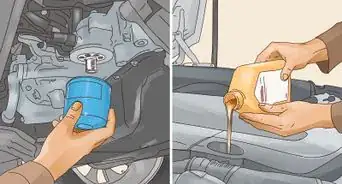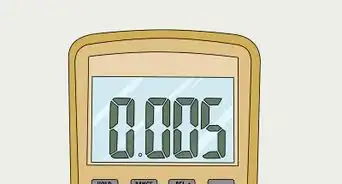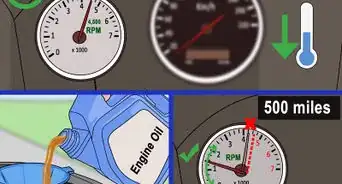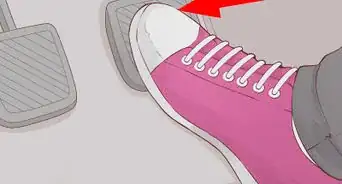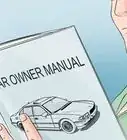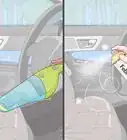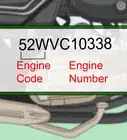This article was co-authored by Chad Zani. Chad Zani is the Director of Franchising at Detail Garage, an automotive detailing company with locations around the U.S. and Sweden. Chad is based in the Los Angeles, California area and uses his passion for auto detailing to teach others how to do so as he grows his company nationwide.
wikiHow marks an article as reader-approved once it receives enough positive feedback. In this case, 80% of readers who voted found the article helpful, earning it our reader-approved status.
This article has been viewed 985,798 times.
A clean engine bay can make it easier to conduct repairs or maintenance. If it's been a long time since you cleaned your engine, it may take a bit of time to allow the degreaser to soak through the grime, and a bit of elbow grease to brush off deposits of oil. It is best to clean your engine and engine bay before washing your car, so you can ensure you wash and rinse off any degreaser that may reach painted components. Cleaning the engine regularly will prevent rust from developing. Road grime and salt are the biggest culprits in developing rust, so rinsing the engine bay will prolong the life of your vehicle's engine.
Steps
Protecting and Preparing Your Dirty Engine
-
1Remove any debris caught in the engine bay. Before you begin cleaning the engine, remove any leaves, grass, twigs or other debris from the engine bay. This debris can become an issue and even cause fires if left to sit on the engine or electrical system long enough.[1]
- It is common for pine needles and leaves to collect at the bottom of the windshield and then fall into the engine bay.
- Look for small animal nests, particularly as the weather becomes cooler.
-
2Protect the electrical system of the car. Different components of the electrical system of the car including the battery needs to be properly covered to prevent any major damages by the water to such components.Advertisement
-
3Disconnect the battery. Spraying water directly into your engine bay could cause some of the electrical components to arc, blowing fuses or causing other damage. Prevent this by loosening the bolt on the negative terminal on the battery and sliding the ground cable off of the terminal.[2]
- You may choose to disconnect the positive terminal as well to remove and clean the battery outside of the engine bay.
- If you leave the battery in the vehicle, tuck the ground cable to the side to prevent it from coming into contact with the terminal.
-
4Cover exposed wiring or electronics. While your engine is fairly waterproof, wrapping plastic around some electrical components can offer you a higher degree of safety. Cover the spark plug inlets, loose wires and the distributor cap if your vehicle came equipped with one.[3]
- Small plastic bags or plastic cling wrap work well to offer protection from water.
- Refer to your vehicle's service manual if you are unsure if it came equipped with a distributor or where to find the spark plug inlets.
-
5Let the engine run for five minutes. Grease on the engine will be much easier to remove when heated. Start the vehicle and allow it to run for five or so minutes. This will allow the engine to get to normal operating temperature and loosen any stuck on grime.[4]
- Don't leave the engine running for too long, or you may burn yourself when you begin to clean again.
Degreasing the Engine
-
1Apply engine degreaser. There are many brands of engine degreaser you can choose from, but most of them tend to work in the same way. Spray the degreaser on the engine from the bottom up, as this will ensure total coverage.[5]
- Most degreasers come in a spray bottle to make spraying it on the engine easy and simple.
- Read the instructions on the degreaser you purchase to ensure you use the best method for the specific cleaner.
-
2Avoid getting any degreaser on painted components. Engine degreaser can remove clear coat from paint, so be careful not to overspray while covering the engine. If you do get any degreaser on the fenders or other painted areas, rinse it off quickly to avoid damaging the paint.[6]
- Degreaser can remove the shine from automotive paint.
- Rinse degreaser off painted surfaces as quickly as possible.
-
3Allow the degreaser to soak in for three to five minutes. Engine degreaser works by eating away at the stuck on grime on the engine. For fairly dirty engines, three minutes is sufficient to loosen up stuck on grease and oil. For especially dirty engines, allow the degreaser to soak for five full minutes before rinsing.[7]
- If the instructions on the degreaser you chose states a different amount of time, follow the instructions on your bottle.
- The longer the degreaser sits, the better job it will do.
- After five minutes or so the degreaser will begin to drip off of the engine.
-
4Use a stiff bristled brush to scrub stuck on grime. With the degreaser still soaking on the engine, use a stiff bristled or steel toothed brush to scrub away at any large deposits of grease, burned oil or grime. It should break loose fairly easily with the degreaser already applied.[8]
- Wear eye protection while scrubbing the engine to avoid getting degreaser in your eyes.
- Wear gloves to prevent prolonged contact with the degreaser on your skin.
- You only need to scrub the engine if it has unusually large deposits of stuck on grime.
-
5Rinse the engine with a regular hose. Do not use a high pressure hose to rinse the engine, as it may disconnect wires or penetrate the plastic you used to cover electronics. A regular garden hose with the nozzle set to stream will rinse the engine effectively and remove most of the grime.[9]
- If you rinse the engine completely and it still looks dirty, reapply the degreaser and allow it to sit for another few minutes.
-
6Wash the car. Once you have rinsed the engine off, you should begin washing your car immediately. This will ensure you clean any engine degreaser off of painted components before it has the chance to do any significant damage.[10]
- Be sure to use a different bucket, sponges, rags and towels on the body of the car.
- Wax any areas of the car that may have come into contact with degreaser.
Cleaning Specific Engine Components
-
1Use a wire brush on battery terminals. Battery terminals often corrode, which can lead to issues with the electrical system of your vehicle. Remove the cables on the battery and use a wire brush to scrub the terminals until they are clean, exposed metal.[11]
- Soaking the ends of the battery cables in an anti-corrosion chemical like CLR can also help ensure a strong electrical connection.
-
2Apply baking soda and water to battery acid. If the battery has corrosion caused by leaking battery acid, you can neutralize it as you clean by using a combination of baking soda and water. Pour a bit of baking soda into a bucket of water and mix it thoroughly. Dip your brush in the mixture and use that to scrub the battery terminals and any other areas acid may have leaked.[12]
- Baking soda makes for an effective cleaning solution as well as a neutralizer for the battery acid.
-
3Use a stiff bristled brush and a sponge on plastic parts. Plastic parts of your engine, such as engine covers and reservoir caps may be difficult to scrub clean. Start by using a stiff toothed, plastic bristled brush along with car wash soap or degreaser. Once the hard to remove grime has been removed, use a sponge with car wash soap to get the last of the grime off before rinsing the pieces with water.
- You may choose to remove the components to clean them out of the engine bay, but it is not required.
- Avoid using steel toothed brushes on plastic as it may cause scratches.
-
4Use brake cleaner to spot clean grime deposits. Brake cleaner breaks up grime and evaporates quickly. Insert the straw into the nozzle of the brake cleaner and direct it at hard to clean spots or areas where the grime is particularly thick. Use a hard toothed brush to scrub the grime away, then spray it again with brake cleaner to rinse it.
- Be careful using brake cleaner in enclosed areas as the fumes can be hazardous.
- Brake cleaner is extremely flammable, so don't use it while smoking or near flames.
Expert Q&A
-
QuestionHow do you get the exterior your car engine clean?
 Chad ZaniChad Zani is the Director of Franchising at Detail Garage, an automotive detailing company with locations around the U.S. and Sweden. Chad is based in the Los Angeles, California area and uses his passion for auto detailing to teach others how to do so as he grows his company nationwide.
Chad ZaniChad Zani is the Director of Franchising at Detail Garage, an automotive detailing company with locations around the U.S. and Sweden. Chad is based in the Los Angeles, California area and uses his passion for auto detailing to teach others how to do so as he grows his company nationwide.
Auto Detailing Expert If you have a more modern car, you can just use a brush and an all-purpose cleaner to clean the plastic covering of your engine components. If you have an older car, you might need to use a degreaser.
If you have a more modern car, you can just use a brush and an all-purpose cleaner to clean the plastic covering of your engine components. If you have an older car, you might need to use a degreaser. -
QuestionCan you use a high-power hose to clean off a car engine?
 Chad ZaniChad Zani is the Director of Franchising at Detail Garage, an automotive detailing company with locations around the U.S. and Sweden. Chad is based in the Los Angeles, California area and uses his passion for auto detailing to teach others how to do so as he grows his company nationwide.
Chad ZaniChad Zani is the Director of Franchising at Detail Garage, an automotive detailing company with locations around the U.S. and Sweden. Chad is based in the Los Angeles, California area and uses his passion for auto detailing to teach others how to do so as he grows his company nationwide.
Auto Detailing Expert I never recommend high-pressure cleaning in an engine bay. I've seen way too many computers, fuse boxes, and alternators get fried by high-pressure cleaning.
I never recommend high-pressure cleaning in an engine bay. I've seen way too many computers, fuse boxes, and alternators get fried by high-pressure cleaning. -
QuestionCan diesel fuel be used to clean an engine?
 Community AnswerStraight diesel fuel would make a poor cleaning agent since it won't rinse well. Buy an emulsifier that turns kerosene into a cleaning solvent that rinses away with water. The resulting solution is the same stuff that is sold in spray cans, but it is much cheaper per use.
Community AnswerStraight diesel fuel would make a poor cleaning agent since it won't rinse well. Buy an emulsifier that turns kerosene into a cleaning solvent that rinses away with water. The resulting solution is the same stuff that is sold in spray cans, but it is much cheaper per use.
References
- ↑ http://www.meineke.com/blog/how-to-clean-car-engine/
- ↑ http://www.meineke.com/blog/how-to-clean-car-engine/
- ↑ http://www.meineke.com/blog/how-to-clean-car-engine/
- ↑ http://www.familyhandyman.com/automotive/car-maintenance/how-to-clean-an-engine/view-all
- ↑ http://www.familyhandyman.com/automotive/car-maintenance/how-to-clean-an-engine/view-all
- ↑ http://www.familyhandyman.com/automotive/car-maintenance/how-to-clean-an-engine/view-all
- ↑ http://www.meineke.com/blog/how-to-clean-car-engine/
- ↑ http://www.popularmechanics.com/cars/how-to/a6008/how-to-clean-an-engine/
- ↑ http://www.popularmechanics.com/cars/how-to/a6008/how-to-clean-an-engine/
About This Article
Before you can clean your car engine, you must remove any debris from the engine bay, disconnect the battery, and cover any electronics or wires. Then, let the car engine run for 5 minutes to warm up the grease. Next, apply an engine degreaser from the bottom of the engine up and allow it to soak for 3 to 5 minutes before using a stiff bristled brush to scrub off grime. Finally, rinse it off with a garden hose and wash the rest of your car. For tips on how to clean specific car parts, scroll down . . .
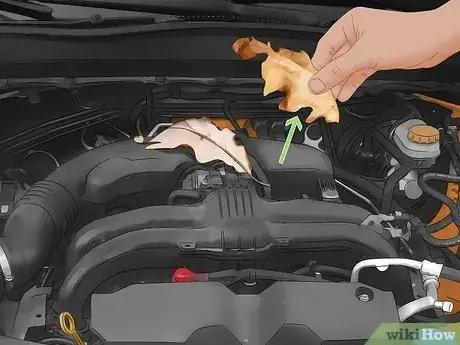
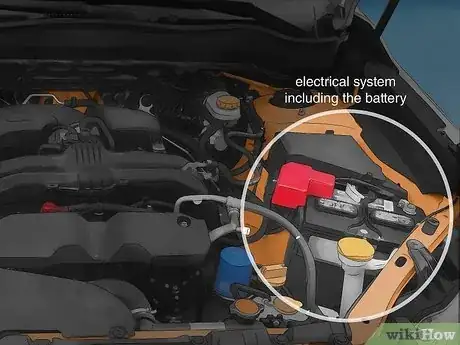
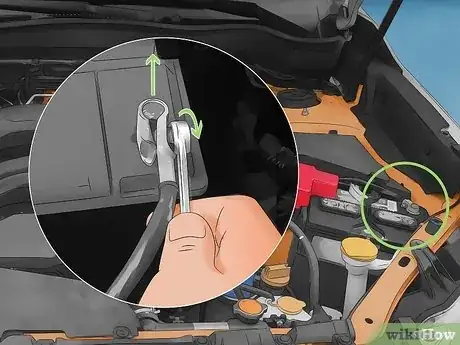
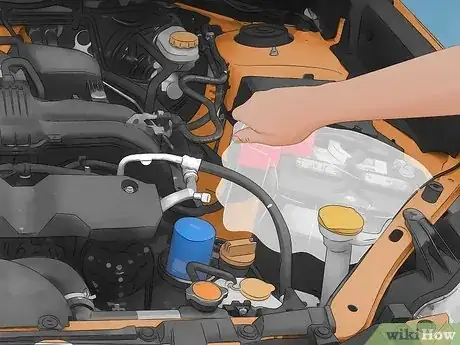
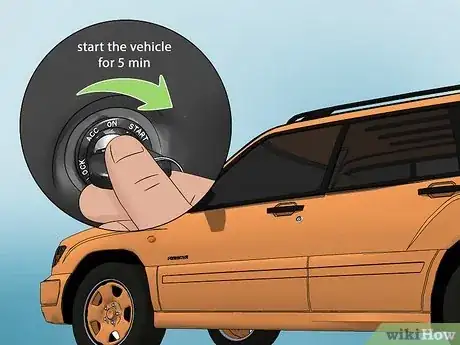
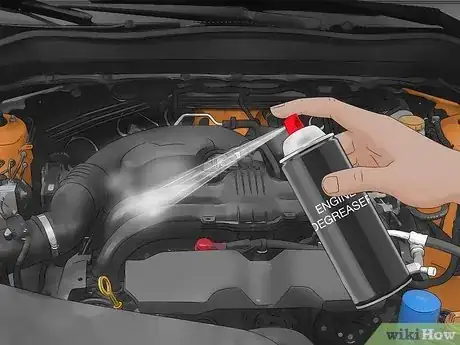
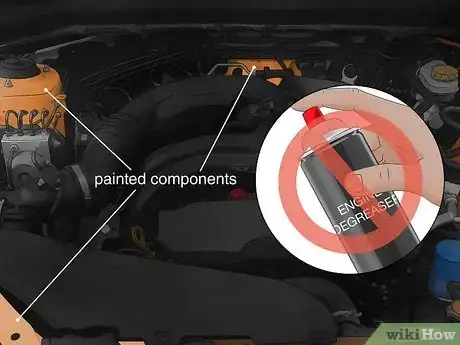
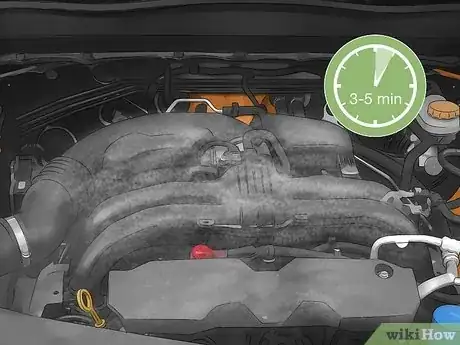
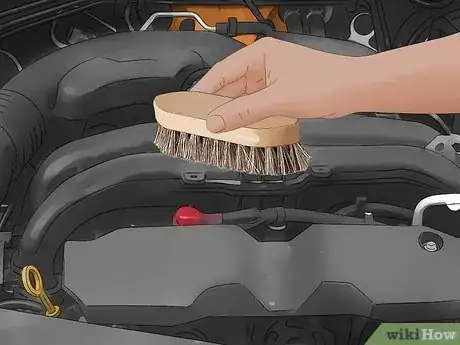
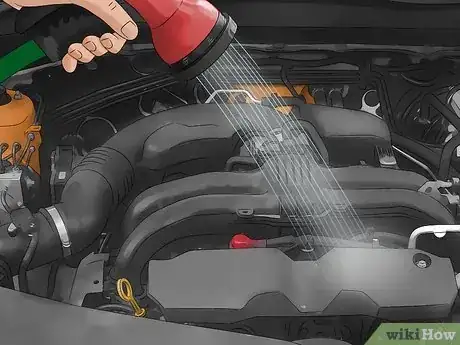
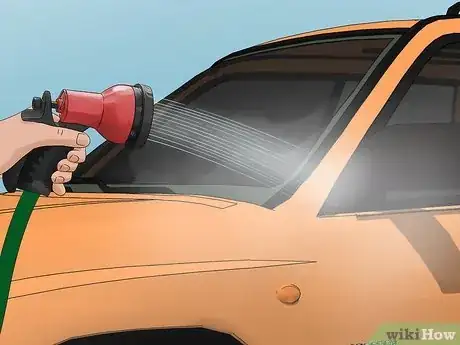
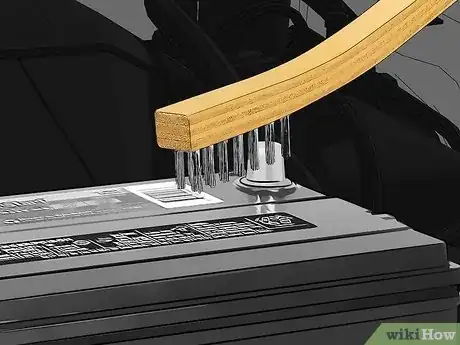
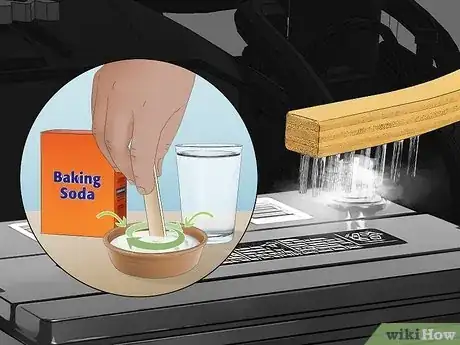
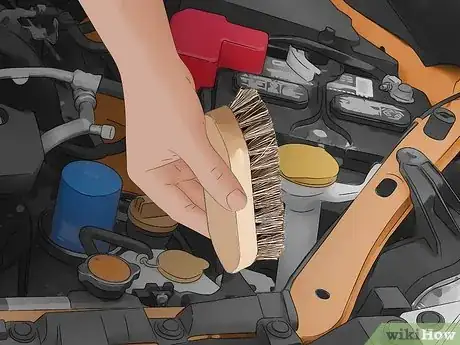
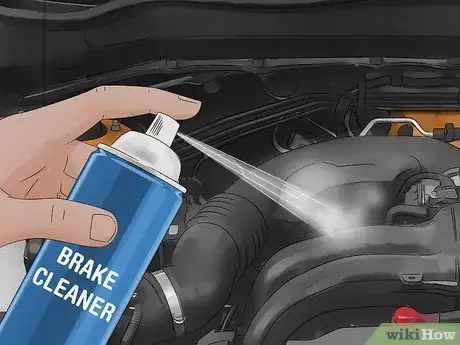

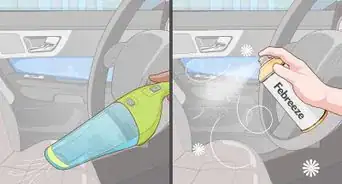

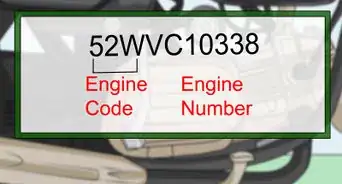
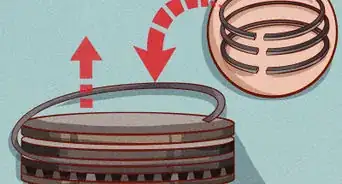

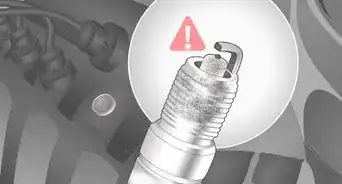
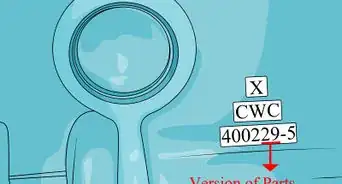
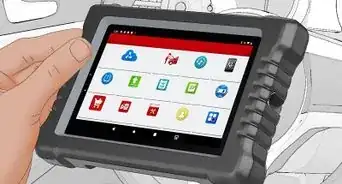
-Step-13.webp)
